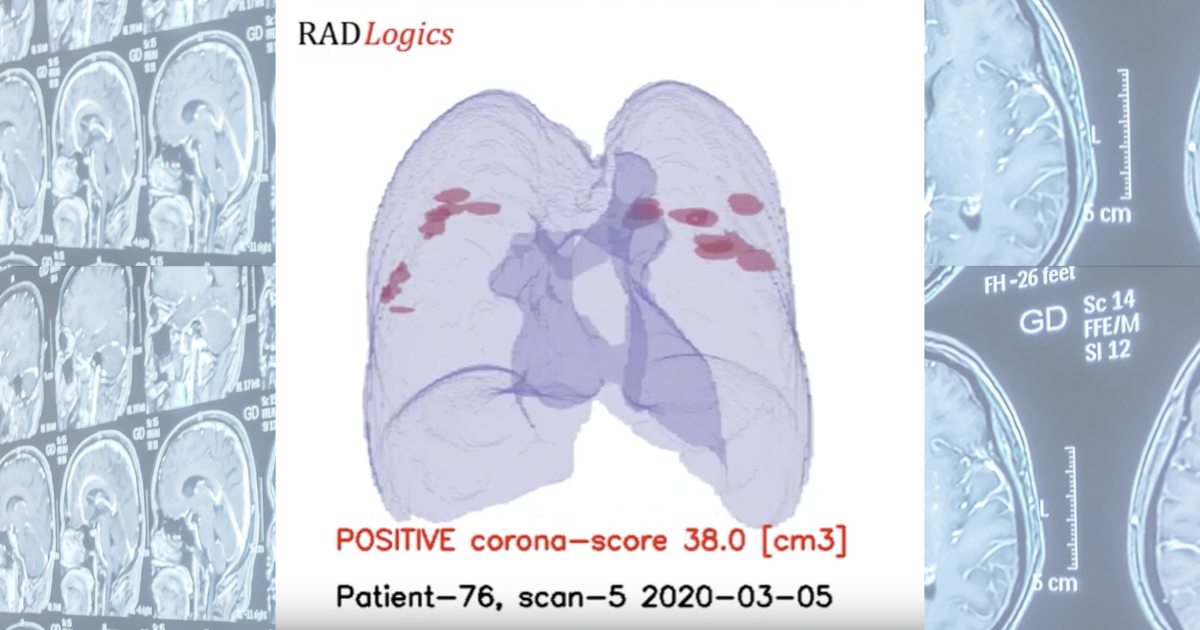Moshe Becker knew something was wrong back in February 2020, when he noticed a surge in the number of chest CT scans performed in hospitals around Suzhou, a city in East China. Becker is the co-Founder of RadLogics, one of the pioneering US companies that leverages AI to analyze medical images and help radiologists to improve accuracy and save time. As RadLogics was already the first non-Chinese company to have their AI solution deployed in over 500 Chinese hospitals, Becker was perfectly positioned to see the problem developing.
Becker noticed that many of these chest CT scans depicted patches of grey and haziness in shapes, forms and locations of the lungs that had never been seen before. The presence of these ‘ground glass’ opacities could be signs of an infection, hemorrhage, or even lung cancer. Becker immediately called Dr. Patrick Browning, RadLogics’ co-founder and Chief Medical Officer.
Both Dr. Browning and the team of advisors from the US agreed this was something that none of them had ever seen before. A few days later, RadLogics’ Chinese counterparts confirmed a new kind of lung disease had indeed surfaced.
“I spoke with our colleagues in China and made the decision right away that the company should stop doing any other kind of development,” says Becker. “I felt we should gather all our resources – from algorithm design, platform development to deployment – and focus on this new disease. At that stage, it hadn’t even been named COVID-19.” Since that moment, RadLogics became exclusively focused on developing solutions for the early detection and quantification of COVID-19 inflammation in the lungs.
The Boston and Tel Aviv-based company continued to stay ahead of the game, publishing their first CT scan research findings on 10th March. A month later, their AI solution was able to detect and quantify the extent of the disease or the inflammation of the lungs in an x-ray. RadLogics immediately launched a huge scale global campaign and now, nearly a year later, their solution is deployed in Brazil, Russia, China, India, Serbia, Italy and the US.
“At first, the system was not able to firmly distinguish between COVID-19 and other forms of inflammation in the lungs,” explains Becker. “It was only helpful in the preliminary triaging of suspected cases. Once those initial triages were verified by human physicians, they became a feedback loop for the system. The quantifiable information on disease progression, hospitalization, and patient management that were accumulated along the way had become extremely valuable and sought after everywhere around the world.”
Becker believes the ability to continuously learn from actual use is what made RadLogics’ AI solutions unique; “If you start today, for example, taking some publicly available datasets and trying to build a COVID-19 solution for CT or x-ray, you will soon arrive at something that works and shows some early results. But it is a far cry from what physicians and nurses truly need. This is a lesson we learned hard from developing lung cancer targeted AI solution some years ago.”
What RadLogics does is continually assess the output of the AI system that’s being run in multiple sites. The company will also get user feedback from fellow clinicians and their final reports to make the algorithm more precise with fewer false positives. “It’s very easy to create a system with high sensitivity,” Becker adds. “The tricky part lies in minimizing false positives which can burden radiologists and clinicians. We found that our solution of continuously improving the algorithm, specificity, and false-positive rate, contributes to a workable system that is incredibly useful for day-to-day clinical use.”
Source: AI Med
